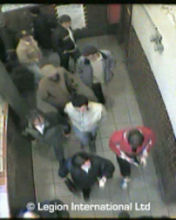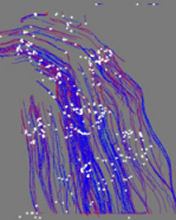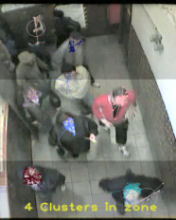Professor Roberto Cipolla and Gabriel Brostow here at the Department are working on a project to detect and track individuals in crowd situations.



Roberto and Gabriel met with London Transport and West Anglia Great Northern Railway (Wagn), who have different reasons to need to detect and track people in crowds.
London Underground use cameras at each of their stations to watch their passengers. The cameras are filtered to some extent; if no one is moving, those cameras are not shown on the monitoring screens. Hundreds of cameras are monitored by staff watching the images, as they switch from one camera to the next. It is impossible to have the manpower to observe all these cameras closely enough to watch for all suicide attempts. Approximately two thirds of suicide attempts are stopped by Underground staff. Tracking individuals more efficiently in crowd situations could improve this figure.
Ian Legg of Wagn needs information about when people travel. People buy tickets and may use them that day or the following month. Planning the number of compartments on each train and when to run trains would be more accurate if detailed pedestrian-traffic information was available.
In both scenarios people counting is required.
There have been approaches to tracking more than one person at a time. One method was successful at tracking three people. More recently there has been success at tracking up to 33 people. But crowds are often much larger.
A high level model for detecting one person would portray the person as a 'stick-figure' model and the camera would be looking for the body parts in relation to one another. If the camera detected these body parts in the correct order, the object is recorded as a person. Predictably, to detect people in crowd situations, this high level model was tried but it does not transfer very well. In a crowd you may only see the top of a head or maybe a torso.
There is a need for accurate people detection in order to be able to move to the next step of tracking those people.
There is a method of detecting features based on recording each point where light meets dark. Such corner detection is a standard algorithm. Video clip 1 shows how features on people have been detected using this method.
Video clip 2 shows how a new algorithm clusters the corner features, giving collections of dots that represent individuals. The dots are joined depending upon their proximity to one another and their coherent motion. The method can fail at times, for example, detecting two people as one when they are moving in unison like soldiers. If a person has a backpack or a rolling suitcase with them, the motion of these items may be slightly different to that of the pedestrian, and the luggage may be recorded as a separate person.
Another of the collaborators in this research is Niccolò Caderni of Legion International Ltd. Legion simulates how massive numbers of pedestrians would move within a public venue such as a transport terminal or sports stadium, footstep by footstep. Detailed models of how people walk and interact in crowds and in open spaces underpin their software. Legion simulations provide an understanding of crowd behaviour which substantially impact on the design and operation of crowded places. It is the algorithms for learning people-traffic models from real world video footage of crowds that Gabriel and his team are refining.

